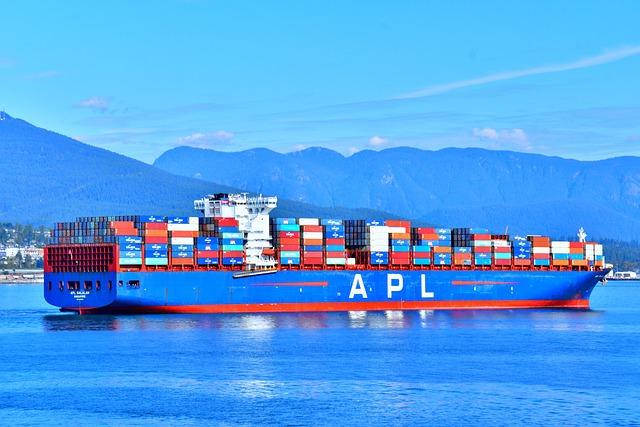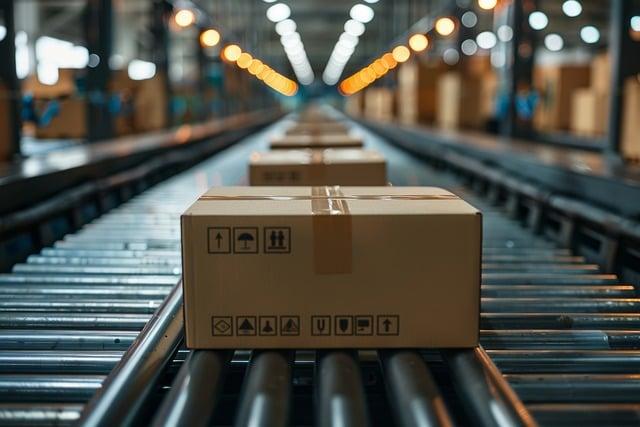In the heart of South Asia lies Pakistan, a nation with a vibrant tapestry woven from its rich history and diverse cultures. Yet, in recent years, the economic vitality of this country has faced significant challenges, prompting a call for holistic solutions that can stimulate growth and sustainability. Among these solutions, the revitalization of trade and commerce stands out as a crucial catalyst. This article delves into the intricate relationship between trade and economic renewal, exploring how enhancing trade networks, fostering entrepreneurial spirit, and embracing innovative practices can elevate Pakistan’s economy. As we navigate through the complexities of global markets and local industries, we will uncover the potential pathways for Pakistan to strengthen its economic resilience and pave the way for a prosperous future. Join us in this exploration of how trade and commerce can breathe new life into the economic landscape of Pakistan, offering hope and opportunity to its people.
Fostering International Trade Partnerships to Boost Economic Growth
In an increasingly interconnected world, the potential for economic growth through international trade partnerships is immense. By actively pursuing and fostering these partnerships, Pakistan can leverage its unique geographical position and rich resources to expand its markets. Engaging with a diverse array of countries not only opens up avenues for export but also facilitates access to critical imports that can enhance local industries. To this end, strategic collaborations can be established with nations that complement Pakistan’s economic framework, emphasizing sectors such as textiles, agriculture, and technology. This synergy can lead to innovations, improved productivity, and ultimately, a more robust economy.
To maximize the impact of international trade, it is essential for Pakistan to focus on developing a strategic framework that encourages investment and eases trade regulatory burdens. This can be achieved through initiatives such as:
- Establishing Free Trade Agreements (FTAs) with key trading partners.
- Enhancing trade logistics for smoother export and import processes.
- Promoting export-oriented industries to boost manufacturing capabilities.
- Investing in trade education to equip businesses with necessary skills and knowledge.
Furthermore, governments can play a pivotal role by creating conducive environments for businesses to thrive. This includes adopting favorable trade policies, investing in infrastructure, and promoting digital platforms for trade facilitation. By prioritizing these aspects, Pakistan can not only strengthen its trade relationships but also drive sustainable economic progress and uplift communities across the country.

Innovating Local Industries for Global Competitiveness
In the quest for revitalizing Pakistan’s economy, one of the most promising avenues lies in enhancing the competitiveness of local industries. By integrating modern technology and innovative practices into traditional sectors, Pakistan can not only meet domestic demands but also position itself as a formidable player in the international market. This transformation involves:
- Adoption of Smart Technologies: Embracing automation and data analytics can streamline production processes, reduce waste, and enhance product quality.
- Skill Development: Investing in education and training programs to equip the workforce with the necessary skills to operate new technologies is crucial.
- Sustainable Practices: Implementing eco-friendly methods in agriculture and manufacturing to appeal to environmentally conscious consumers globally.
To achieve global competitiveness, it’s essential to foster collaborations between local businesses and international entities. This can facilitate knowledge transfer and provide access to advanced markets. Additionally, the government can play a pivotal role by:
- Creating Incentives: Offering tax breaks and subsidies for industries that adopt innovative practices and technologies.
- Improving Infrastructure: Developing transportation and logistics infrastructure to ensure smooth supply chains and market accessibility.
- Promoting Export Initiatives: Supporting local businesses in participating in international trade shows and exhibitions to showcase their products.

Enhancing Infrastructure and Logistics for Seamless Commerce
To foster an environment where businesses can thrive, improvements in both the physical and digital infrastructure are paramount. A modernized transportation network, including roads, railways, and airports, enhances logistics capabilities, ensuring that goods move swiftly and efficiently. Furthermore, investing in smart logistics solutions—such as automated warehousing, advanced tracking systems, and real-time data analytics—can drastically reduce delays and costs. This paves the way for better inventory management and allows businesses to respond dynamically to customer demands.
Additionally, the integration of digital payment systems and e-commerce platforms plays a crucial role in streamlining trade. By expanding access to online marketplaces and ensuring secure transaction methods, local businesses can tap into both national and international markets without the traditional barriers. To illustrate the potential of improved logistics, consider the following table showcasing key benefits derived from enhanced infrastructure:
| Benefit | Description |
|---|---|
| Reduced Transit Times | Faster movement of goods leads to timely deliveries. |
| Lower Costs | Efficient logistics minimize operational expenditures. |
| Increased Accessibility | Wider market reach for local products and services. |
| Enhanced Customer Experience | Improved satisfaction through reliable delivery schedules. |

Empowering Small and Medium Enterprises to Drive Export Potential
Small and Medium Enterprises (SMEs) are the backbone of Pakistan’s economy, representing a significant portion of employment and innovation. To harness their full potential for exports, it is crucial to provide SMEs with resources, training, and access to international markets. Initiatives like mentorship programs can help these enterprises navigate the complexities of global trade, while financial support mechanisms, such as low-interest loans, can allow them to invest in capacity enhancement. By establishing collaborative networks between various stakeholders, including government agencies, financial institutions, and trade bodies, we can create a robust ecosystem that empowers SMEs to promote their products on a larger scale.
Furthermore, enhancing the digital presence of SMEs can greatly contribute to their export capabilities. By leveraging technology, these businesses can reach new customers and markets worldwide. Initiatives such as e-commerce training, digital marketing workshops, and participation in international trade fairs can provide the necessary skills and exposure for SMEs looking to expand their reach. The table below outlines key areas of focus to strengthen their export potential:
| Area of Focus | Description |
|---|---|
| Capacity Building | Workshops and training for production efficiency and quality standards. |
| Market Research | Guidance on identifying and targeting potential international markets. |
| Financial Aid | Access to subsidized loans and grants focused on export readiness. |
| Networking Opportunities | Events to connect SMEs with buyers, investors, and industry experts. |
To Conclude
revitalizing Pakistan’s economy through trade and commerce is not merely an option—it is an imperative. As we navigate the complexities of a global marketplace, the potential for growth lies not only in local innovations and strengths but also in robust international partnerships. By embracing a multifaceted approach that prioritizes sustainable practices, diversifies trading relationships, and enhances the infrastructure essential for commerce, Pakistan can position itself as a pivotal player on the global stage.
The journey toward economic renewal is one that requires collaboration across sectors, a commitment to policy reform, and an unwavering focus on the needs of the populace. As we stand at this crossroads, the challenge is clear: to transform Pakistan’s economic landscape into one that fosters resilience, creates opportunity, and promotes prosperity for all.
With the right vision and dedication, Pakistan can rise to meet this challenge, harness the full potential of its trade and commerce sectors, and ignite a new era of economic vitality. The future is not just a destination; it is a journey paved with possibilities that await realization. Let us embark on this journey together, with the hope that Pakistan’s economic revitalization will not only benefit its citizens but also contribute positively to the broader global community.



